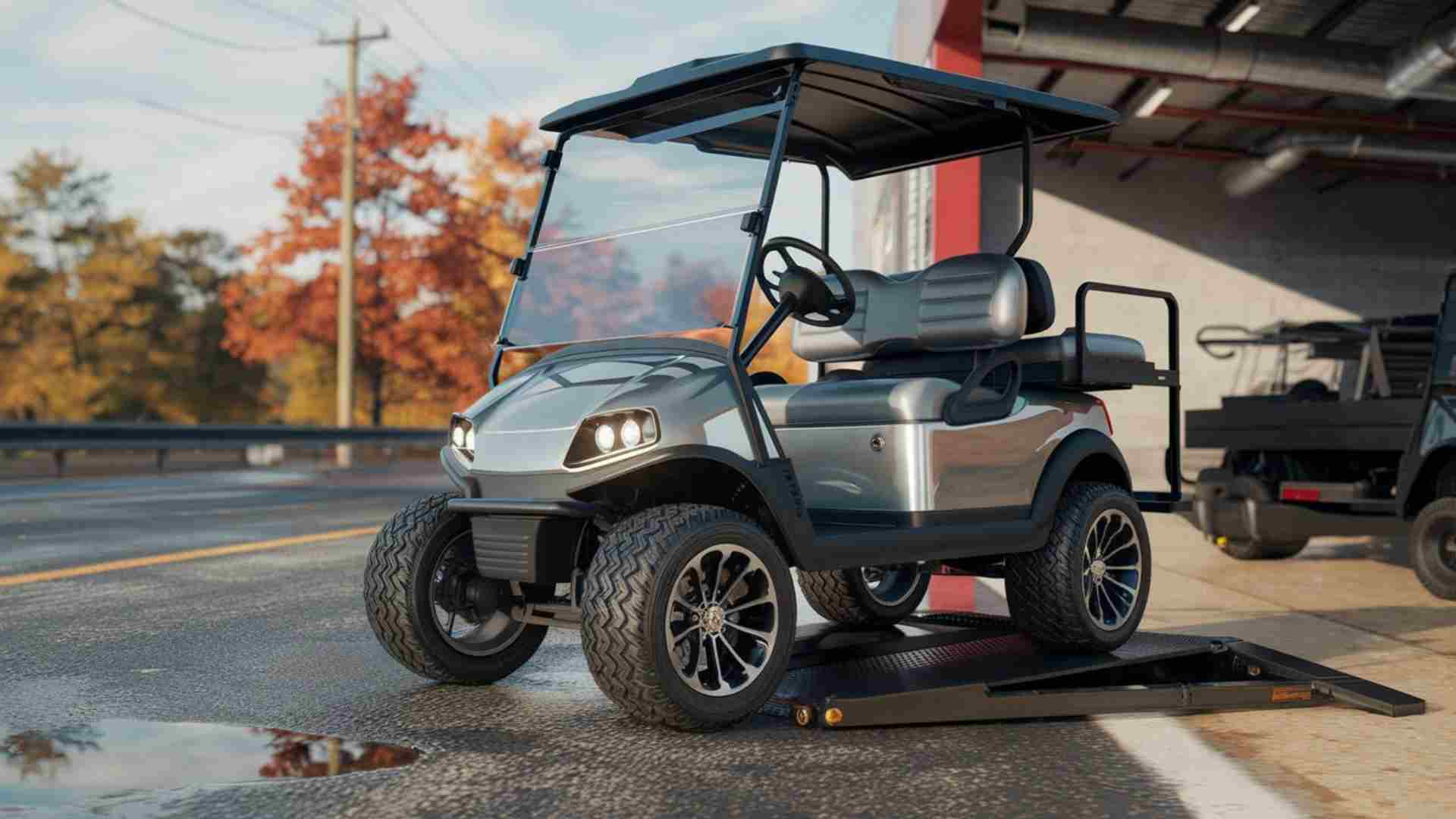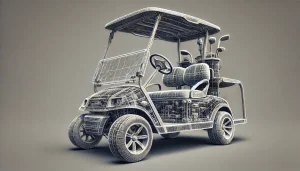
Essential Golf Cart Maintenance Tricks

Golf Cart Maintenance Tricks
Maintaining our golf carts ensures they run smoothly and last longer. Routine maintenance is crucial, whether we perform the tasks ourselves or hire professionals. For more details on proper upkeep, check out our golf cart maintenance guide.
Importance of Routine Maintenance
Just like any vehicle, our golf carts need regular upkeep to stay in good working order. Regular maintenance helps prevent minor issues from becoming major problems and extends the life of our carts. Routine checks can include inspecting tire pressure, greasing moving parts, and ensuring the batteries are healthy. For electric golf carts, proper battery maintenance is essential, as noted by Tigon Golf Carts.
Consider the following benefits of routine maintenance:
- Extended Lifespan: Regular maintenance can significantly extend the lifespan of our golf carts.
- Safety: Keeping our golf carts in good condition ensures they are safe to operate.
- Performance: Well-maintained carts perform better and provide a smoother ride.
Explore our guide on extending golf cart lifespan and performance upgrades.
DIY vs. Professional Service
When it comes to golf cart maintenance, we have two primary options: doing it ourselves (DIY) or employing a professional service. Each approach has its pros and cons. For more information on maintenance options, visit our comprehensive maintenance guide.
DIY Maintenance
DIY maintenance can be cost-effective and convenient for those of us who enjoy working on our carts. However, it requires a certain level of mechanical knowledge and access to the right tools.
Advantages:
- Cost savings
- Immediate action on minor issues
- Personal satisfaction from maintaining our own carts
Disadvantages:
- Requires time and effort
- Risk of errors if not familiar with technical aspects
For more DIY tips, check out our section on preparing golf carts for seasonal changes.
Professional Service
Professional service offers expertise and ease. This option is ideal for those of us who prefer to leave the technical details to the experts.
Advantages:
- Professional expertise
- Time-saving
- Comprehensive maintenance
Disadvantages:
- Higher cost
- Requires scheduling and may involve downtime
Explore more on the benefits of professional services in our industry insights.
Electric vs. Gas Golf Cart Maintenance
When it comes to maintaining our golf carts, understanding the difference between electric and gas models is crucial for their longevity and performance. Let’s dive into the specific maintenance needs of each type. For a detailed comparison, see our electric vs. gas golf carts guide.
Battery Care for Electric Golf Carts
Electric golf carts, while requiring less overall maintenance than gas models, still need careful attention, particularly when it comes to battery care. Proper battery maintenance is critical for extending the lifespan of our carts and ensuring they run efficiently.
- Charging: We should charge our electric golf cart after each use. It takes about 18 hours for a full charge after completing an 18-hole round.
- Inspecting Batteries: Regularly inspect battery connections for corrosion and ensure all cable connections are tight. Check water levels and add distilled water as needed.
- Ventilation: Charge batteries in well-ventilated areas to prevent gas build-up.
- Safety: Follow the manufacturer’s instructions strictly to avoid accidents. Use protective clothing when handling batteries.
For more battery care tips, visit our battery maintenance page.
Oil Changes for Gas Golf Carts
Gas golf carts have different maintenance needs, with oil changes being one of the most critical tasks. Proper oil maintenance ensures the engine runs smoothly and efficiently.
- Frequency: Gas golf carts typically require oil changes 2-4 times a year depending on usage and manufacturer recommendations.
- Oil Type: Use the oil type recommended by the manufacturer. Using the incorrect oil can lead to poor engine performance.
- Procedure: Warm up the engine before draining the oil, and be sure to properly dispose of the used oil at a recycling center.
For additional information, check out our guide on gas-powered golf cart maintenance.
Battery Maintenance Tips
Keeping our golf cart batteries in top shape is essential for the longevity and performance of our vehicles. Here are some practical tips to help us assess the health of our batteries and determine when a replacement might be necessary.
Assessing Battery Health
- Visual Inspection: Look for any signs of damage, such as cracks or leaks.
- Water Levels: Check water levels every 2-3 weeks for older carts, and monthly for newer models.
- Battery Age: The age of a battery can be found through a code inscribed on one of the battery terminals.
For more on battery health, visit our battery maintenance guide.
Essential Maintenance Practices
In maintaining our golf carts, it’s crucial that we adhere to essential practices like checking tire pressure and regular greasing. These tasks can help prolong the lifespan of our carts.
Checking Tire Pressure
- DOT-rated tires: Up to 35 psi
- Turf tires: Around 22 psi
Proper tire pressure helps avoid premature wear and tear, ensuring a smoother ride. For more on tire maintenance, visit our tire maintenance guide.
Regular Greasing and Tightening
- Greasing Suspension Joints: Every 3 months
- Steering Components: Every 6 months
- Axle Bearings: Annually
For more detailed tips on greasing and tightening, check out our maintenance guide.
Seasonal Maintenance
Proper seasonal maintenance of our golf carts ensures they remain in optimal condition year-round. Explore more on seasonal maintenance for winter and beachside care.
Winter Storage Tips
Winter can be tough on our golf carts if they are not stored properly. Here’s how we can prepare them for the cold months:
- Inspect Braking System: Ensure brakes are in good condition before storing the cart for winter.
- Battery Tender: Using a battery tender helps maintain charge levels during the off-season.
- Disconnect Batteries: Prevent strain and damage by disconnecting the batteries.
For more winter storage tips, visit our winterization guide.
Beach Home Maintenance
Living by the beach means our golf carts are exposed to salty air and sand, requiring specific maintenance practices:
- Regular Cleaning: Clean the undercarriage frequently to prevent corrosion.
- Lubrication: Regularly lubricate steering and suspension systems to counteract the effects of salty air.
For more on beachside care, visit our maintenance guide.
Safety and Prevention
Ensuring the safety of our golf cart is just as important as maintaining its mechanical components. Check out our safety tips for more guidance.
Preventative Measures
- Regular Inspections: Conduct routine checks of brakes, lights, and tires.
- Speed Control: Adhere to speed limits and avoid sharp turns.
Child Safety and Accident Prevention
- Supervision: Always supervise children while operating or riding in a golf cart.
- Horseplay Prohibition: Enforce strict rules against horseplay.
For more safety tips, visit our safety guide.
TIGON GOLF CARTS

Share This Golf Cart Post:
FINDING THE RIGHT GOLF CART MODELS AT THE RIGHT PRICE!
Tigon Golf Carts proudly offers DENAGO EV® 0% vehicle financing, making it easier than ever to own your dream golf cart. With flexible payment options and competitive rates, we ensure that upgrading to an DENAGO® is not only exciting but also financially feasible for our customers, allowing you to hit the road in style without breaking the bank.
CONNECT WITH US
- MONDAY - FRIDAY:
- 9:00AM - 5:00PM
- SATURDAY:
- 9:00AM - 5:00PM
- SUNDAY: Closed
- Hatfield, PA
- Pocono Pines, PA
- Ocean View, NJ
TIGON GOLF CART NEWSLETTER
Join 40,000+ Subscribers and get a new discount coupon on every Saturday.
























